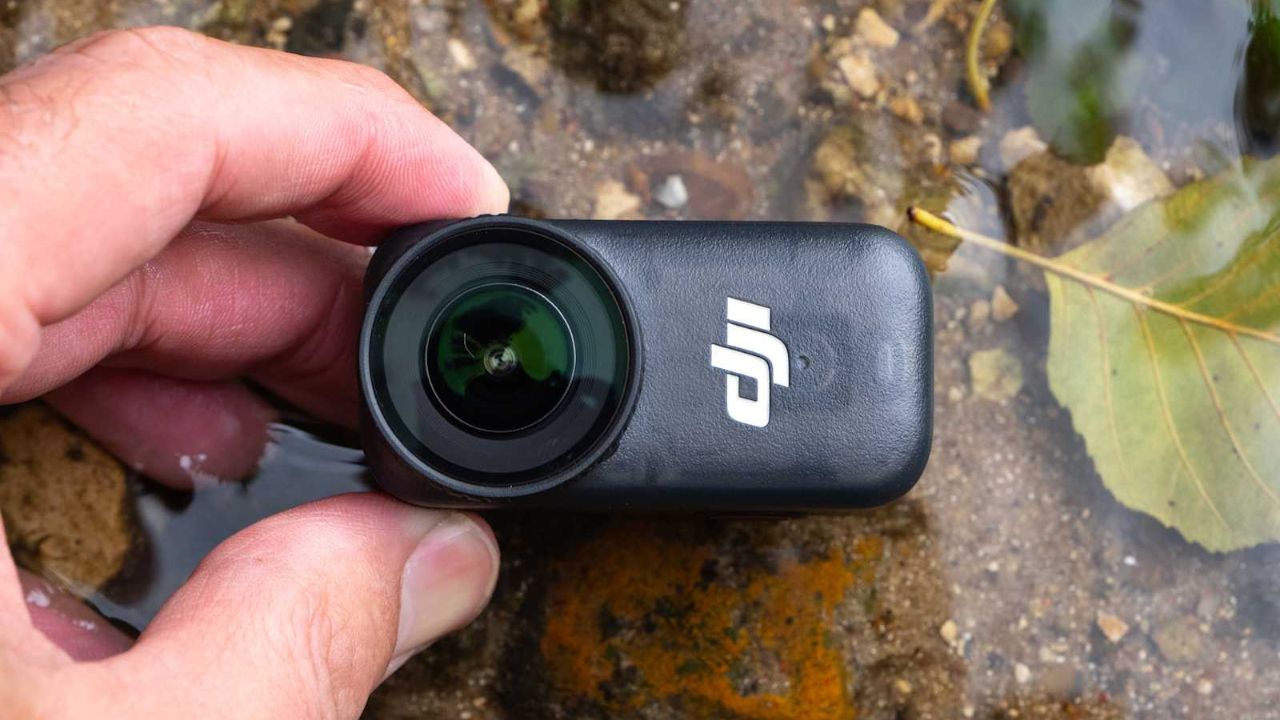
DJI, long recognized for its innovations in drones and cameras, is stepping into the mini action camera arena with the Osmo Nano. Priced at $299, the Osmo Nano competes directly with the likes of Insta360 Go Ultra and Go 3S, bringing DJI’s signature video quality to a pocket-sized device.
Design and Build: Tiny but Functional
The Osmo Nano is DJI’s first ultra-compact action camera designed for versatility and convenience. Its small, lightweight camera module weighs just 52 grams (1.83 ounces) and is crafted from translucent plastic. This makes it easy to clip onto your head, body, or even pets for creative filming, while also being unobtrusive during everyday activities such as hiking, swimming, or cycling.
Unlike Insta360, which inserts the camera into a flip-up screen, the Osmo Nano features a magnetic screen mount. The Vision Dock, which houses the display, can attach to the camera in two orientations: facing forward for standard action shots or backward for vlogging. The magnetic design ensures easy attachment and detachment, though switching modes requires removing and reattaching the Dock, a minor inconvenience compared to Insta360’s simpler flip mechanism.
With a 33-foot (10-meter) waterproof rating, the Osmo Nano is suitable for swimming and light water activities. Its compact capsule design and modular accessories, including a magnetic hat clip and lanyard, make it adaptable to a wide range of creative scenarios.
Camera and Video Capabilities
At the core of the Osmo Nano is a 1/1.3-inch sensor, larger than the Insta360 Go 3S’s 1/2.3-inch sensor. This allows better performance in low-light conditions and supports ultra-wide-angle footage with a 143-degree field of view. Users can switch between ultra-wide and dewarped (square) video, offering flexibility depending on the project.
The Osmo Nano records video in 4K at up to 60 fps, with slow-motion options up to 120 fps. It also supports 10-bit color and D-LogM recording, enabling creators to achieve natural, high-dynamic-range footage. Compared to rivals, the Nano provides brighter, sharper, and more color-accurate videos, particularly in daylight conditions. Low-light performance is strong, although the Insta360 Go Ultra has a slight edge in extremely dim environments.
For stabilization, DJI’s RockSteady 3.0 reduces camera shake effectively in daylight. Nighttime stabilization is less reliable due to slower shutter speeds, and moving the camera quickly may produce motion blur. The Nano also features HorizonBalancing, which keeps the video level even during tilting up to 30 degrees.
Controls and User Experience
Physically, the Osmo Nano has a single record/power button, while all other controls are managed via the Vision Dock’s touchscreen. The interface supports swiping and tapping for settings such as resolution, frame rate, RockSteady stabilization, and D-LogM mode. Although functional, the menus may require some time for users to navigate efficiently.
Built-in memory options include 64GB and 128GB, eliminating the need for microSD cards and enabling faster offloading. The camera module has a 530mAh battery, and the Vision Dock has 1,300mAh, allowing up to 90 minutes of standalone recording and 200 minutes when docked. However, higher resolution settings, such as 4K at 60 fps, significantly reduce battery life to around 35 minutes for the camera alone. Fast charging via the Dock can restore 80% battery in 20 minutes, ensuring minimal downtime.
Additional features include voice and gesture control, time-lapse, Pre-Rec, and compatibility with DJI’s Mic 2, Mic 3, and Mic Mini for high-quality audio recording.
Editing and App Support
While DJI offers the Mimo smartphone app for video editing, it falls short compared to Insta360’s Studio app. Users seeking advanced AI-assisted editing tools or more creative effects may find DJI’s app limiting.
Pros and Cons
Pros:
- Ultra-compact and lightweight design
- High-quality 10-bit video recording
- DJI Mic compatibility for better audio
- Built-in memory for convenience
Cons:
- Limited stabilization in low-light conditions
- Less intuitive editing app
- Switching between front and rear camera modes is slightly cumbersome
Verdict
The DJI Osmo Nano marks a solid entry into the mini action camera market. It excels in video quality, color accuracy, and low-light performance, making it an attractive choice for content creators seeking a small, versatile camera. While the editing software and mode switching lag behind competitors, the Nano’s performance and accessory ecosystem make it a compelling alternative to the Insta360 Go Ultra and Go 3S, especially considering its competitive $299 price point, which includes the Vision Dock, magnetic hat clip, lanyard, protective case, and charging accessories.
For anyone looking to capture high-quality action footage without carrying bulky equipment, the Osmo Nano offers a powerful, compact solution.
The post DJI Osmo Nano Review: Compact Action Camera with Exceptional Video Quality appeared first on trendblog.net.